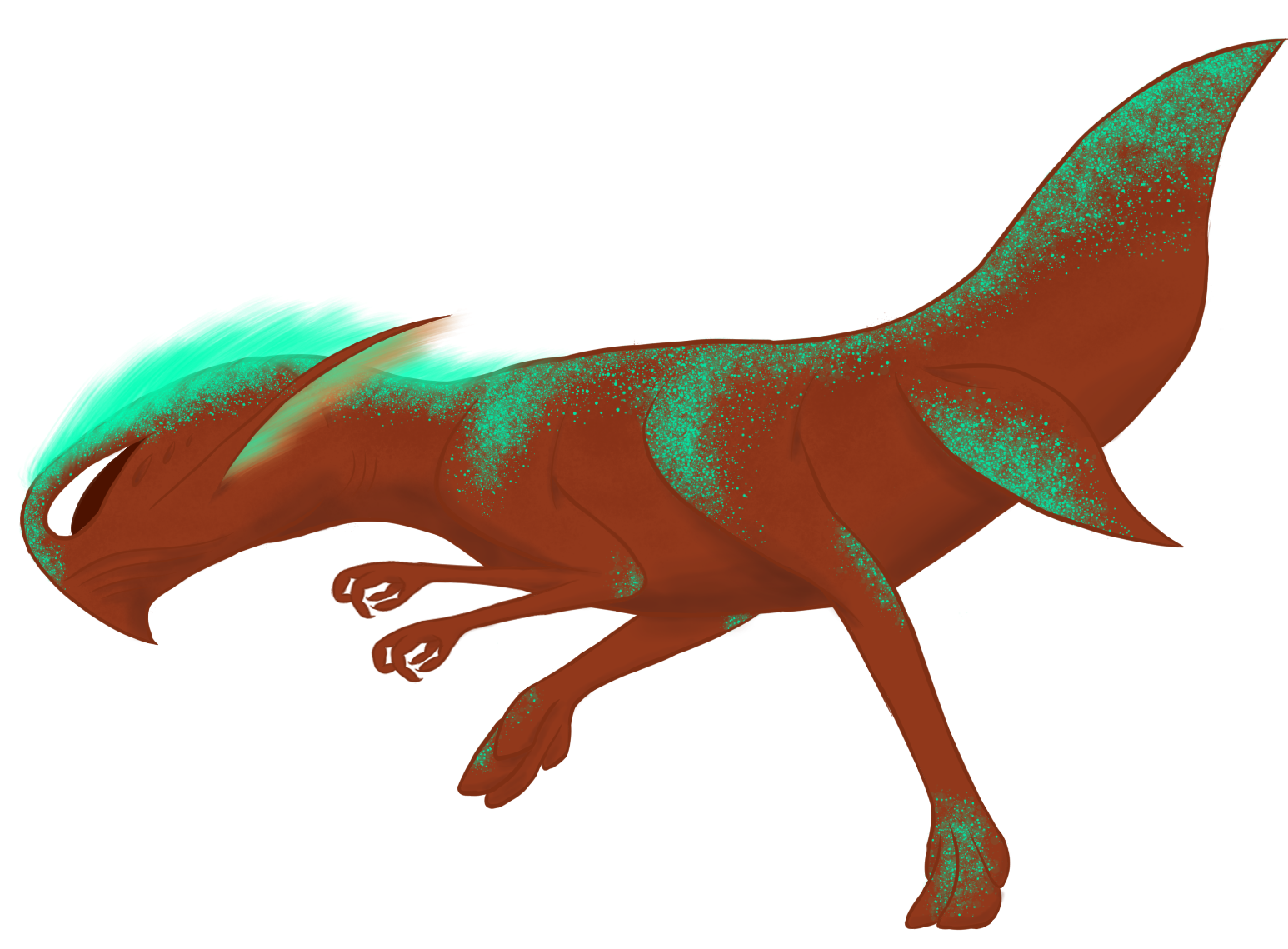Calypsian
Calypsians are a species of vaguely theropodian sophonts native to the moon Calypso in the Proxima Centauri system. Their biochemical basis is radically different from any other sophont species in known space, and thus are not fully integrated into the USSC (though they are allied.)
Biology
Anatomy & Morphology
Calypsians are horizontal bipedal hexapods with an inherently bifurcated limb structure; the lower portion of each single limb has two separate branches. The forelimbs at the front of the torso are manipulatory in nature, followed by their locomotive midlimbs (with lower branches fused) and fin-like hindlimbs used for balance and steering. The torso itself transitions to a narrow, fluke-like tail held high above the rest of the body as a counterweight and aerodynamic control surface. The Calypsian skeletal system is composed of a substance nearly identical to fibreglass, being a tough carbon polymer reinforced with quartz fibres. Their vascular hydrogen carrier is haemiridin, a highly complex iridium-based protein that, while canary yellow in its dehydrogenated state, turns a dull orange when hydrized. Though efficient, haemiridin is highly photosensitive, causing the Calypsian vascular system to be completely opaque in most places. Calypsians have a dorsal mane of hairlike silicate fibres running from the tip of their head to the base of the first shoulders, illuminated in a fibre-optic-like manner by bioluminescent skin patches to mimic the flora of their homeworld. Similarly, their tails have an individually-unique pattern of heat-radiating splotches to help pod members identify each other.Perception & Sensory Capabilities
Visual
Like most of the Calypsian biosphere, Calypsians' vision is based mainly in the infrared spectrum, with some visible red. To detect this, Calypsians have a short series of sensory pits on either side of the head, just behind the biosonar arch.Auditory
Calypsian sensory processing is largely based on hyper-fine sonic ranging; useful for organisms living in the dim glow of a red dwarf sun. Their primary sense is biosonar, facilitated by a complex hydrostatic organ not unlike those of Earth's dolphins. Calypsians use different sonic frequencies for different purposes; lower ultrasound frequencies (20-40 kHz) are used to communicate linguistically, while higher frequencies (40-80 kHz) are used for echolocation.Olfactory
Calypsian olfactory sense is extraordinarily sensitive as well, facilitated by a pair of long, dexterous tentacle-like appendages that protrude from the skull just below the infrared pits. These antennae each sprout a long, thin line of fine silicate fibres that comb the air for scents.Tactile
The Calypsian tactile sense is moderately strong. Their entire epidermis is sensitive to tactile input, though the effect is most intense in the manipulative structures at the ends of the upper limbs and the olfactory antennae.Ecology
Geographic Origin & Distribution
Calypsians are quite an uncommon sight across known space, as planetary environments that mirror their homeworld Calypso are sporadic in the local interstellar group. The planets they have managed to settle are few and far between, thus the likeliest place to meet a Calypsian is at an interstellar hub station on one of their interstellar routes.Habitat & Survival Factors
The optimal survival range in a variety of factors for an unequipped Calypsian is actually somewhat narrow given their unique biochemistry, and while specialized habitats and equipment can allow them to directly interact with other spacefaring species, they typically prefer to keep to their own kind.Archive Data
Scientific Name
Tesserachira sapiens
- visual (650 - 850 nm)
- auditory (80 Hz - 80 kHz)
- tactile (1 μm limit)
- olfactory
The values presented here describe the conditional limits of sustained indefinite survival. The species can survive more extreme conditions for shorter amounts of exposure.
Gravity limit
1.1 G
Pressure range
2.6 to 4.2 atm
Air mix
14% to 20% H2
Temperature range
-40 to -80 °C
Radiation limit
- Gamma: 0.4 Gy
- Beta: 0.1 Gy
- Alpha: 0.02 Gy




Comments